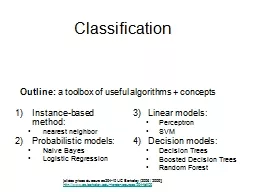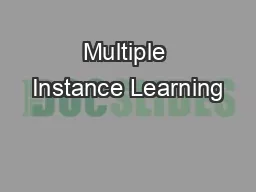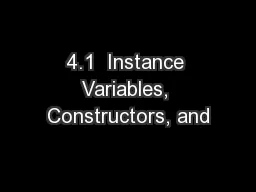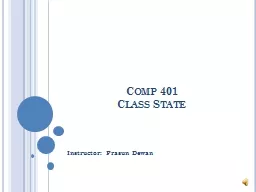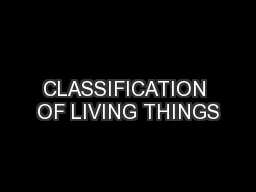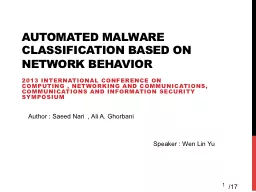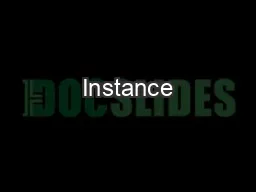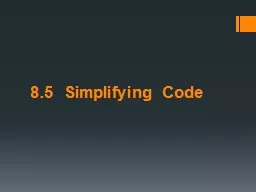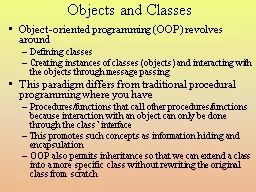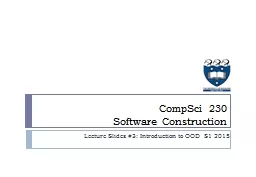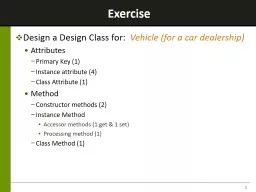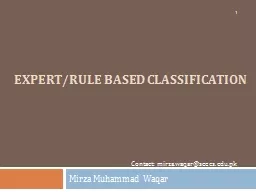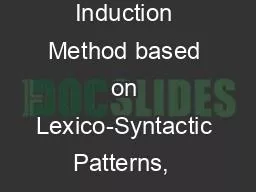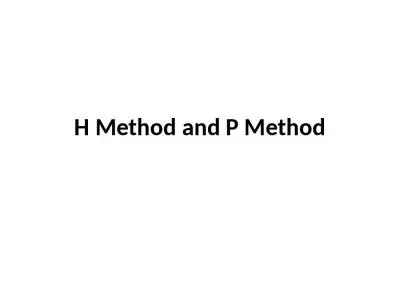PPT-Classification Instance-based method:
Author : pamella-moone | Published Date : 2018-03-07
nearest neighbor Probabilistic models Naive Bayes Logistic Regression Linear models Perceptron SVM Decision models Decision Trees Boosted Decision Trees Random Forest
Presentation Embed Code
Download Presentation
Download Presentation The PPT/PDF document "Classification Instance-based method:" is the property of its rightful owner. Permission is granted to download and print the materials on this website for personal, non-commercial use only, and to display it on your personal computer provided you do not modify the materials and that you retain all copyright notices contained in the materials. By downloading content from our website, you accept the terms of this agreement.
Classification Instance-based method:: Transcript
Download Rules Of Document
"Classification Instance-based method:"The content belongs to its owner. You may download and print it for personal use, without modification, and keep all copyright notices. By downloading, you agree to these terms.
Related Documents

